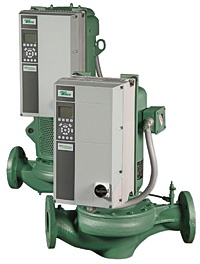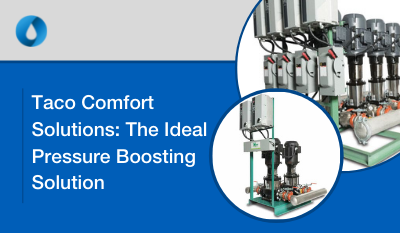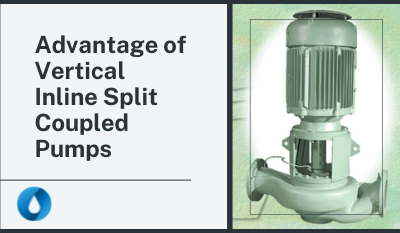Most modern HVAC equipment modulates, or varies, its speed in order to conserve energy while operating at part-load conditions (any condition less than maximum). Full load conditions are realized rarely, usually only a handful of hours per year, which makes performance at part-load pretty important. For HVAC pumps, operating at part-load conditions could result in significant energy savings since, according to the pump affinity laws, horsepower varies with the cube of the flow. For example, reducing a 600-GPM pump using 22-bhp to 300-GPM would only require 3-bhp.
 To operate an HVAC pump at part-load conditions, a Variable Frequency Drive (aka Variable Speed Drive) must be utilized. The VFD drives the motor, which drives the pump. So, if less speed is better, how low can you go in this application?
To operate an HVAC pump at part-load conditions, a Variable Frequency Drive (aka Variable Speed Drive) must be utilized. The VFD drives the motor, which drives the pump. So, if less speed is better, how low can you go in this application?
The VFD has no lower limit. It may vary its speed anywhere from 0-Hz to 60-Hz (or 0-100% speed). Most 3-phase AC motors are rated for 20:1 variable torque, meaning they may safely operate between 5-100% of full speed. The HVAC pump, however, is limited by the practicality of the application.
So hat is the minimum design flow of the system? Often, this is not considered. If you were to calculate the system’s minimum flow and associated minimum head, or friction loss, to maintain that flow, generally you will find an HVAC pump would rarely ever need to operate at less than 1/3 of max design flow, or 33% of full rated speed.
If you need to ensure that your HVAC equipment is performing efficiently during any load condition, you should contact your manufacturer's rep for assistance.
Blog image is a Taco pump with a variable frequency drive



.png)




Submit a Comment